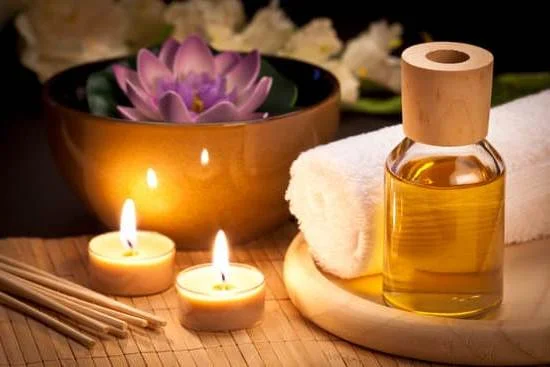
Aromatherapy has become increasingly popular in the wellness community, with many individuals turning to essential oils as a natural way to enhance their overall well-being. In particular, aromatherapy has found its place in the realm of yoga and meditation practices, offering a powerful tool for relaxation, focus, and grounding.
This article will delve into the fascinating world of aromatherapy for yoga and meditation and explore how incorporating essential oils can elevate these practices to new levels of tranquility and mindfulness.
When it comes to cultivating a serene and peaceful environment for yoga or meditation, aromatherapy has proven to be indispensable. The benefits of using essential oils during these practices are abundant.
From promoting deep breathing patterns that facilitate relaxation to creating a sense of calmness and balance in the mind, the therapeutic scents can significantly enhance the experience. Whether you are looking to find your Zen in an intense yoga session or seek inner clarity during meditation, learning about aromatherapy will equip you with valuable knowledge on harnessing its power.
Throughout this article, we will unravel everything you need to know about aromatherapy for yoga and meditation. We’ll start by providing a comprehensive overview of what aromatherapy is and how it works, along with an examination of commonly used essential oils.
We’ll also guide you through selecting the right essential oils for specific desired effects such as relaxation or focus. Additionally, we’ll dive into practical advice on using aromatherapy in both pre-session rituals and during your actual practice.
Whether you’re an experienced yogi or newly embarking on your meditation journey, incorporating aromatherapy into your daily practice can greatly amplify the benefits you receive from these mindful activities. So join us as we explore this beautiful synergy between aromatic essence and spiritual well-being, unlocking new dimensions of peace and tranquility within yourself.
Understanding Aromatherapy
Aromatherapy is a holistic healing practice that has gained significant popularity in the wellness community. It involves the use of natural plant extracts, known as essential oils, to promote physical, mental, and emotional well-being. Understanding the basics of aromatherapy is essential for harnessing its power effectively in yoga and meditation practices.
What is Aromatherapy?
Aromatherapy is a therapeutic technique that utilizes the scent of essential oils to affect the mind and body. These oils are derived from various parts of plants, such as flowers, leaves, stems, or roots. When inhaled or applied topically, the aroma of these oils triggers specific responses in the brain, influencing emotions and physiological functions.
Types of Essential Oils
There are countless essential oils available, each with its own unique properties and benefits. Some commonly used essential oils for aromatherapy include lavender for relaxation and stress relief, peppermint for focus and mental clarity, and eucalyptus for respiratory support. It’s important to choose high-quality essential oils that are 100% pure and free from synthetic additives to ensure safety and effectiveness.
Purity Matters
When selecting essential oils for aromatherapy practice, purity matters greatly. Pure essential oils contain concentrated plant extracts without any added fillers or chemicals that may dilute their therapeutic effects. Look out for reputable brands that provide third-party testing on their products to ensure purity and quality. Using pure essential oils allows you to fully experience their intended benefits while minimizing any potential risks.
Incorporating aromatherapy into yoga and meditation practices can greatly enhance their overall effectiveness by creating a more immersive experience. By understanding how aromatherapy works and choosing the right essential oils mindfully, individuals can tap into the transformative power of scent to deepen their connection with themselves during these powerful self-care practices.
Selecting the Right Essential Oils for Yoga and Meditation
Exploring Different Essential Oil Scents and Their Benefits
When it comes to selecting the right essential oils for yoga and meditation, it’s important to consider the specific benefits that each scent can offer. Different essential oils have unique properties that can enhance relaxation, focus, grounding, or other desired states of mind during these practices.
For relaxation and stress relief, lavender essential oil is a popular choice. Known for its calming properties, inhaling lavender oil during yoga or meditation can help create a soothing atmosphere and promote deep relaxation. On the other hand, if you’re looking to enhance focus and concentration, oils such as peppermint or rosemary can be effective options. These invigorating scents can help sharpen your mental clarity and keep you present during your practice.
Recommended Essential Oils for Yoga and Meditation
While there are numerous essential oils available in the market, certain ones are particularly well-suited for yoga and meditation practices. Aside from lavender, some other recommended essential oils include:
- Frankincense: Known for its grounding properties, frankincense oil helps deepen one’s spiritual connection and promote feelings of peace and calm.
- Sandalwood: This warm woodsy scent is often used in meditation practices to induce a sense of tranquility and promote a meditative state of mind.
- Bergamot: With its citrusy aroma, bergamot oil is great for uplifting moods before a yoga or meditation session. It can also help relieve anxiety and improve overall emotional well-being.
Remember that individual preferences may vary when it comes to scent selection. Experimenting with different essential oils allows you to find the ones that resonate with you on a personal level.
Tips on Testing and Blending Essential Oils
Before using any essential oil on your body or in your environment, it’s crucial to perform patch tests to ensure you don’t have any adverse reactions or allergies. To conduct a patch test, dilute a small amount of the essential oil in a carrier oil, such as almond or jojoba oil, and apply it to a small area of skin. Wait for at least 24 hours to see if any negative reactions occur.
Once you have confirmed that a particular essential oil is safe for use, you can start blending oils to create personalized aromatherapy blends that suit your specific needs. Blending essential oils allows you to combine scents and properties to achieve desired effects. Some popular blends for yoga and meditation include lavender with frankincense for relaxation and grounding, or bergamot with peppermint for focus and energy.
When blending essential oils, remember to follow appropriate dilution guidelines and use high-quality, pure essential oils. This ensures the safety and efficacy of your blends.
Using Aromatherapy in Yoga Practices
Aromatherapy can be a powerful addition to your yoga practice, enhancing the overall experience and deepening your connection to mind, body, and spirit. There are several ways to incorporate aromatherapy into your pre-session rituals and during your yoga sessions to create a soothing and invigorating environment.
One way to use aromatherapy in yoga practices is by diffusing essential oils. Before you begin your yoga session, consider using an essential oil diffuser to fill the room with calming scents. Lavender and chamomile are popular choices that promote relaxation and help relieve stress. Peppermint or eucalyptus oils can provide a refreshing and invigorating atmosphere for a more energizing practice.
Another option is to use aromatherapy-infused yoga mats. These mats are specially designed with essential oils infused into the material, releasing fragrance as you move through your poses. This can enhance mindfulness and make it easier to focus on your breath work. There are various scents available, such as sandalwood for grounding or citrus blends for a refreshing practice.
Creating a soothing ambient environment is key when using aromatherapy in yoga practices. Consider dimming the lights, playing soft instrumental music, and incorporating candles scented with essential oils. The combination of gentle lighting, calming music, and pleasant fragrances can help create a serene atmosphere that supports relaxation, focus, and inner peace during your practice.
Incorporating aromatherapy into your yoga practices allows you to engage multiple senses simultaneously, enhancing the overall experience and deepening your connection to each pose. Whether you choose to diffuse essential oils, use aromatherapy-infused yoga mats, or create a serene ambient environment with scented candles, harnessing the power of aroma can greatly enhance the benefits of your yoga sessions.
Using Aromatherapy in Yoga Practices
| Benefits | Recommended Essential Oils |
|---|---|
| Promotes relaxation and stress relief | Lavender, Chamomile |
| Enhances energy and focus | Peppermint, Eucalyptus |
| Aids in grounding and stability | Sandalwood, Frankincense |
Incorporating aromatherapy into your pre-session rituals and during your yoga sessions can create a soothing and invigorating environment that enhances the benefits of your practice. Using an essential oil diffuser to fill the room with calming scents or opting for an aromatherapy-infused yoga mat allows you to engage multiple senses simultaneously, deepening your connection to mind, body, and spirit.
By creating a serene ambient environment with dim lighting, soft music, and scented candles, you can further support relaxation, focus, and inner peace during your yoga sessions. Experimenting with different essential oils and exploring the benefits they offer can help you personalize your aromatherapy experience to align with your specific goals for each yoga practice.
Enhancing Meditation with Aromatherapy
Meditation is a practice that allows individuals to achieve a state of calm, focus, and self-awareness. Aromatherapy can be a valuable tool in enhancing the meditation experience by creating a peaceful and focused state of mind. The use of essential oils during meditation has been found to deepen relaxation, promote mental clarity, and relieve stress. Here are some methods for incorporating aromatherapy into your meditation routine to enhance your overall experience.
– Diffusion: One of the most popular ways to use essential oils during meditation is through diffusion. Add a few drops of your chosen essential oil to a diffuser filled with water and let the aroma fill the room. Not only does this create an inviting atmosphere but also helps create a sense of calm and serenity, allowing you to enter a more meditative state.
– Inhalation: Inhaling essential oils directly can have powerful effects on the mind and body. You can add a few drops of essential oil to your palms, rub them together, cup your hands over your nose, and take slow deep breaths. Alternatively, you can also apply a drop or two onto a tissue or handkerchief and inhale as needed during your meditation practice.
– Topical application: Applying essential oils topically before or during meditation can provide grounding and centering effects. Dilute the essential oil with a carrier oil such as coconut or jojoba oil before applying it directly to pulse points like wrists, temples, or behind ears. This method not only creates an olfactory response but also allows for absorption through the skin.
When selecting essential oils for enhancing meditation, consider scents known for their calming properties such as lavender, frankincense, sandalwood, or chamomile. These scents help relax the mind and promote a sense of tranquility. Experiment with different essential oils to find the scents that resonate with you and enhance your personal meditation practice.
Remember, everyone’s experience with aromatherapy is unique, so it’s important to pay attention to how certain scents affect your mood and overall meditation experience. Start with small amounts of essential oil and gradually increase if needed. It’s always recommended to do a patch test on a small area of skin before applying the oil topically to ensure you don’t have any adverse reactions.
Incorporating aromatherapy into your meditation routine can elevate your practice and deepen your connection to yourself. By exploring the benefits of essential oils during meditation, you can create a more serene environment for reflection, relaxation, and inner peace.
Safety Considerations and Precautions for Aromatherapy in Yoga and Meditation
Aromatherapy can be a powerful tool for enhancing yoga and meditation practices, but it is important to use essential oils safely and responsibly. Here are some safety considerations and precautions to keep in mind when incorporating aromatherapy into your yoga and meditation routines:
- Dilute Essential Oils: Essential oils are highly concentrated and should never be used undiluted on the skin. It is important to dilute them properly before applying topically or using in a diffuser. A general guideline is to mix 2-3 drops of essential oil with 1 tablespoon of carrier oil such as jojoba, sweet almond, or coconut oil.
- Perform Patch Tests: Before using a new essential oil, it is recommended to perform a patch test on a small area of skin. This helps determine if you have any allergies or sensitivities to the oil. Apply a small amount of diluted essential oil on the inner forearm and wait for 24 hours to check for any adverse reactions.
- Be Aware of Allergies: Some individuals may have specific allergies or sensitivities to certain essential oils. Common allergenic oils include lavender, chamomile, citronella, eucalyptus, and tea tree. If you know you have an allergy to any specific plant or flower, avoid using its corresponding essential oil.
- Avoid Ingestion: While there are some essential oils that can be consumed under the guidance of a qualified professional, it is generally not recommended to consume essential oils without proper education and supervision. Ingesting certain essential oils can cause harm or interact with medications.
- Store Properly: Essential oils should be stored in dark glass bottles in a cool, dry place away from direct sunlight or heat sources. This helps maintain their potency and extends their shelf life.
By following these safety considerations and precautions, you can enjoy the benefits of aromatherapy while ensuring your well-being during yoga and meditation practices. It is always a good idea to consult with a qualified aromatherapist or medical professional if you have any concerns or questions about using essential oils safely in your daily routines.
Case Studies
Aromatherapy has gained popularity in the wellness community for its ability to enhance relaxation, focus, and mindfulness. Many yogis and meditators have incorporated aromatherapy into their practices and have experienced numerous benefits. In this section, we will explore some case studies and testimonials from individuals who have used aromatherapy in their yoga and meditation journeys.
One yogi, Sarah, shared her experience of using lavender essential oil during her yoga sessions. She found that the scent of lavender helped her to relax both mentally and physically, allowing her to enter a deeper state of calmness during her practice. Sarah also mentioned that incorporating aromatherapy into her yoga routine helped her to release tension and stress more effectively.
Another meditator, John, described how he used frankincense essential oil to elevate his meditation practice. He found that inhaling the scent of frankincense helped him create a focused and peaceful state of mind. John noticed that when he used the essential oil regularly during meditation, he was able to achieve a higher level of clarity and concentration.
These case studies highlight the diverse ways in which aromatherapy can positively impact yoga and meditation practices. By incorporating specific essential oils into their routines, individuals like Sarah and John were able to enhance their mindfulness, relaxation, focus, as well as release tension and stress more effectively. Their experiences serve as testimonials for others looking to explore the benefits of aromatherapy in their own yoga and meditation journeys.
| Individual | Essential Oil Used | Benefits Experienced |
|---|---|---|
| Sarah (Yogi) | Lavender | – Enhanced relaxation
|
| John (Meditator) | Frankincense | – Elevated meditation practice
|
These case studies demonstrate the powerful effects that aromatherapy can have on yoga and meditation practices. By incorporating aromatherapy into their routines, yogis and meditators can enhance their overall experience and achieve a greater sense of well-being.
How to Incorporate Aromatherapy into Daily Life Beyond Yoga and Meditation
In conclusion, aromatherapy has proven to be a powerful tool in enhancing the benefits of yoga and meditation practices. By understanding the basics of aromatherapy and selecting the right essential oils, individuals can create a soothing and transformative experience for themselves.
Incorporating aromatherapy into pre-session rituals and diffusing essential oils during sessions can enhance mindfulness, promote relaxation, and deepen breath work in yoga. Similarly, using essential oils during meditation can help create a peaceful and focused state of mind, promoting increased clarity and stress relief.
Safety considerations should always be taken into account when using essential oils in yoga and meditation practices. It is important to dilute essential oils properly and perform patch tests to avoid any potential allergic reactions or sensitivities. By using essential oils in a safe and responsible manner, individuals can fully enjoy the benefits of aromatherapy without any negative side effects.
Beyond yoga and meditation, incorporating aromatherapy into daily life has numerous possibilities for promoting well-being and balance. Whether it is through self-care practices like bathing or massage, or creating a calming home environment with the use of essential oils, individuals are encouraged to explore the diverse ways they can bring aromatherapy into their everyday routines.
By experimenting with different scents and blends, they can find what works best for them and enhance their well-being on a regular basis.
Overall, by incorporating aromatherapy into daily routines beyond yoga and meditation, individuals can continue to experience the transformative power of scent throughout their lives. Aromatherapy offers endless opportunities for enhancing well-being, relaxation, focus, and overall mental clarity. With an open-minded approach and some experimentation with different scents, anyone can tap into the wonderful world of aromatherapy and discover its many benefits for themselves.
Frequently Asked Questions
What aromatherapy oil for yoga?
When it comes to selecting an aromatherapy oil for yoga, there are several options that can enhance the practice and deepen the sense of relaxation. One popular choice is lavender essential oil, well-known for its calming properties. Lavender’s gentle scent is often used to promote a peaceful atmosphere and reduce stress, making it ideal for creating a serene environment during yoga sessions.
Another option is frankincense essential oil, which has been used for centuries in spiritual practices due to its grounding and soothing effects. This oil can help instill a sense of tranquility and focus during yoga practice. Additionally, citrus scents like lemon or orange can provide an uplifting energy boost, aiding in invigorating and energizing the body and mind during yoga.
What essential oil is best for meditation?
The best essential oil for meditation largely depends on personal preference and the desired effect. However, one favored choice among practitioners is sandalwood essential oil. Known for its woody, warm aroma, sandalwood has long been associated with promoting deep relaxation and mental clarity.
It helps quiet the mind and creates an atmosphere conducive to inner reflection and stillness during meditation sessions. Another popular option is frankincense essential oil, which not only helps calm the mind but also aids in deepening spiritual connections and enhancing focus. This versatile oil has been used throughout history as an aid in achieving a meditative state.
What essential oils are good for yoga teachers?
Yoga teachers can benefit from various essential oils that help them create a harmonious environment for their classes while supporting their personal well-being. One essential oil commonly used by yoga teachers is eucalyptus oil known for its refreshing scent that promotes clear breathing both for themselves as well as their students during practice. Rosemary essential oil can be particularly beneficial for instructors as it enhances mental clarity and focus while energizing both the body and mind—essential qualities when guiding students through a class session effectively.
Peppermint essential oil can provide teachers with an invigorating aroma that uplifts their mood and energizes them, helping to maintain a positive and enthusiastic presence during classes. Additionally, tea tree oil can be useful for yoga teachers as it has purifying properties that cleanse the air and create a clean and fresh environment for students.




